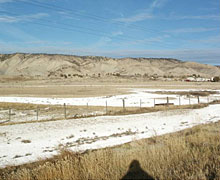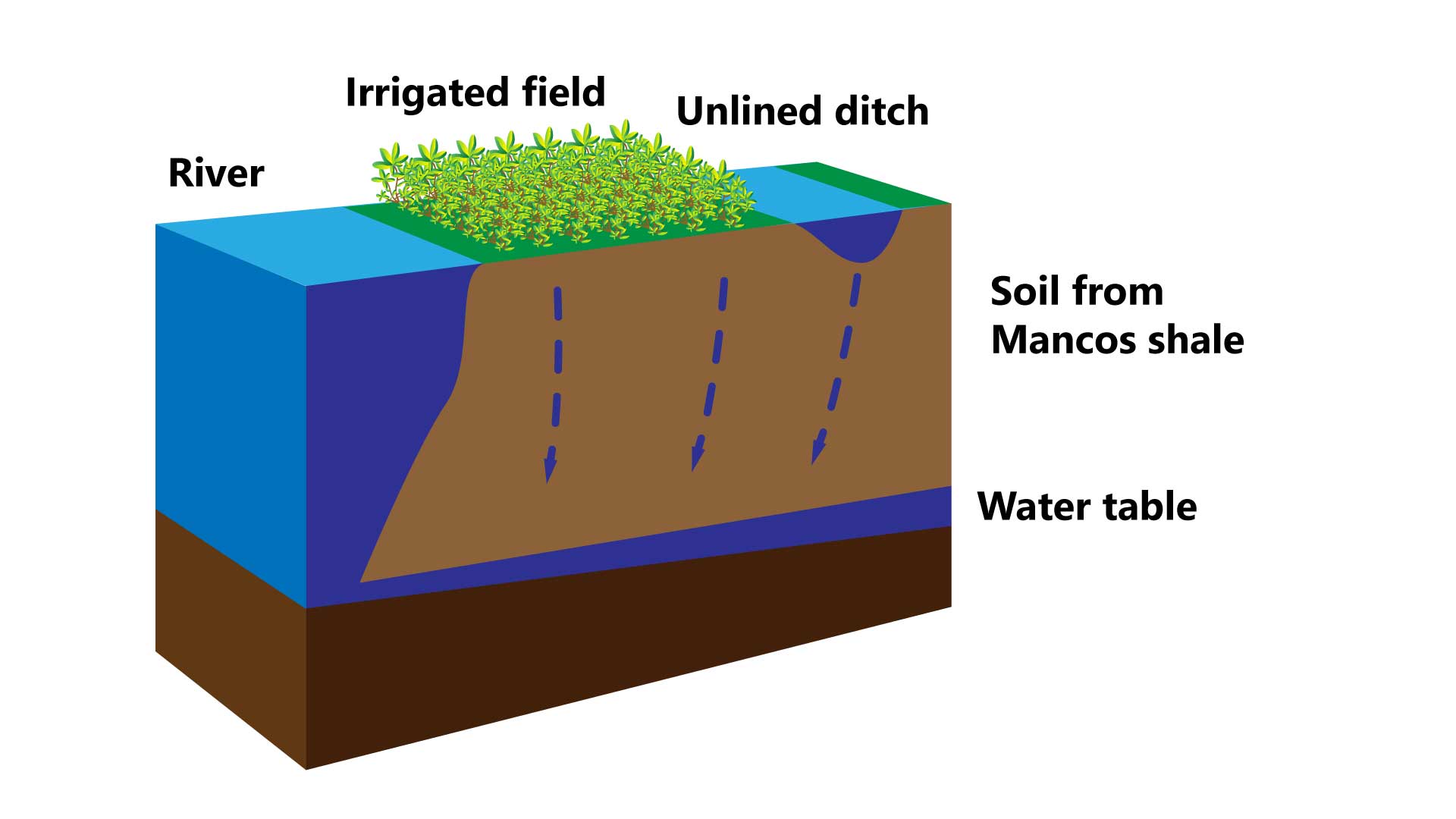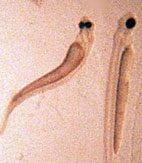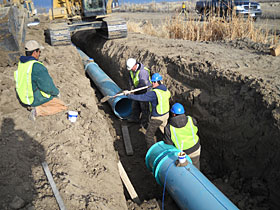- Reclamation
- Upper Colorado Basin
- Gunnison Basin Selenium Management Program
Gunnison Basin Selenium Management Program
The Gunnison Basin Selenium Management Program is a private/public partnership of concerned parties working together to identify and implement solutions to reduce selenium concentrations in the Gunnison and Colorado rivers. The goal of the SMP is to reduce adverse effects of selenium on four endangered fish species in the Gunnison and Colorado rivers. This goal will be achieved by incorporating and accelerating ongoing irrigation system improvement efforts and other programs in the Uncompahgre Valley and other portions of the lower Gunnison River Basin to reduce the amount of selenium entering the river.
A work group was established in December 2009 and was charged with developing a program outline and implementation plan aimed at meeting Colorado state water quality standards for selenium in an effort to protect the four endangered fish. The success of the SMP will greatly reduce the chance of future conflicts between endangered species protection and small and large water users in the basin.

Partners of the program include:
- Colorado River Water Conservation District
- Bostwick Park Water Conservancy District
- Delta Conservation District
- Uncompahgre Valley Water Users Association
- Upper Gunnison River Water Conservancy District
- Shavano Conservation District
- Colorado Water Conservation Board
- U.S. Geological Survey
- U.S. Fish and Wildlife Service
- Natural Resources Conservation Service
- Bureau of Land Management
- Bureau of Reclamation
- General public
Program Overview
Soils in the lower Gunnison Basin are naturally high in selenium and salts. When irrigation water from agricultural and non-agricultural sources (e.g. landscaping, ponds, golf courses, etc.) seeps into these soils, selenium is picked up by the water and eventually enters the Gunnison and Colorado Rivers where it can cause reproductive problems for aquatic life. Portions of the lower Gunnison and Colorado rivers and their tributaries currently exceed federal and Colorado state selenium levels considered to be safe for aquatic life. These rivers serve as critical habitat to four endangered fish species: the Colorado pikeminnow, the razorback sucker, the bonytail, and the humpback chub. These fish have been adversely affected by reduced stream flows, diminished water quality, and other adverse changes in their habitat.

The Gunnison River Basin Selenium Management Program is a pro-active program that emphasizes both protecting existing and future water uses and the recovery of the endangered fish. This program will only be successful if all stakeholders in the basin work together collaboratively and proactively.

razorback sucker
Programmatic Biological Opinion
A Programmatic Biological Opinion is an endangered species consultation or analysis written by the U.S. Fish and Wildlife Service that addresses multiple actions for an individual resource program, land use plan, or other larger scale planning effort. For example, a PBO could address the effects of multiple water uses in an entire basin on endangered species. This is the case with the Gunnison Basin PBO. It is termed "programmatic" because it addresses a variety of public and private water uses in a comprehensive manner and provides Endangered Species Act compliance for all the water removed from the river by water users in the Gunnison Basin.
The Endangered Species Act provides a means for conserving the habitat upon which endangered species depend and to provide a program for the conservation of such species. The act directs federal agencies to participate in conserving these species and to evaluate any federal actions to ensure that their activities are not likely to jeopardize the continued existence of species or adversely modify designated critical habitats. The FWS reviews these evaluations on federal actions and writes a biological opinion on the proposed effects of the actions on endangered species.
As part of this ESA consultation process, Reclamation and FWS evaluated the effects of reoperation and changed water releases from the Aspinall Unit (Blue Mesa, Morrow Point, and Crystal reservoirs) on downstream endangered fish. During this consultation, as well as the operation of the Dallas Creek and Dolores River projects. The state of Colorado and the Colorado River Water Conservation District requested that the evaluation include all water uses in the Gunnison Basin and thereby complete ESA compliance for public and private water users throughout the basin. In 2009, the FWS prepared the PBO that provides ESA coverage for all water users in the Gunnison Basin.
The Gunnison Basin PBO calls for operating the Aspinall Unit in a way which would provide higher or more natural spring river flows and base flows for the benefit of the endangered fish, based on the amount of water flowing into the Blue Mesa Reservoir in any given water year. It also calls for developing a SMP to reduce selenium concentrations in the Gunnison River.
Program Benefits
- Provides ESA compliance for existing and new private/public water users. The Gunnison Basin Programmatic Biological Opinion recognizes that depletions of water and existing selenium concentrations harm endangered fish. The PBO provides Endangered Species Act compliance for existing public and private water user activities that harm endangered fish species provided that certain measures are implemented, including the SMP.
- Provides water security, environmental compliance and regulatory certainty in the Gunnison Basin. The PBO greatly reduces the chances of major conflicts between the ESA and existing and new water uses in the basin.
- Provides ESA compliance for Upper Gunnison Basin subordination and compliance for depletions from new augmentation contracts throughout the basin. Without the subordination, the water rights of the Aspinall Unit would hinder any new water developments in the upper Gunnison Basin. With the subordination, the water user with a senior water right, in this case the Aspinall Unit, allows a junior water right to take water before the Aspinall Unit. Numerous existing and future small water sales and uses are now covered by the PBO and approval of these is now much simpler.
- Rather than requiring individual water users to address depletion impacts to endangered species, under the PBO the Upper Colorado River Endangered Fish Recovery Program continues to address the depletion effects while the SMP addresses the water-quality effects. The recovery program encompasses the entire upper Colorado River Basin and is designed to support existing and future water use while providing for the recovery of endangered fish species. The recovery program does not address water-quality issues like selenium that affect endangered species, thus the need for a SMP in the Gunnison Basin.
- Allows existing and future water uses in the basin to continue while proactively assisting in the recovery of endangered fishes. Gunnison Basin stakeholders/water users can continue their water operations and their depletions (federal projects and non-federal projects) and have ESA compliance. Water users have ESA compliance when the SMP is showing progress in meeting selenium reduction goals. A SMP report showcasing progress made by the SMP is provided to the FWS annually. These reports are available on this page.
Helps connect water users with organizations that have information and funding for improving irrigation systems and crop production while helping the local economies; and may reduce operation and maintenance costs of irrigation systems and conserve water.

Crews place final section of pipe for the EF
Lateral Piping Project. - photo courtesy of UVWUAIn high salinity areas, programs such as Reclamation's Colorado River Basin Salinity Control Program can provide up to 100% funding for implementing off-farm best management practices such as canal lining or piping irrigation delivery systems (often salt is found in high selenium soils - therefore two pollutants can be addressed simultaneously). A lined canal or piped irrigation system means there may be potential for development of pressurized deliveries and conversion to sprinkler systems or other high efficiency irrigation systems, reduced operation and maintenance costs, and better-quality water being provided to the farm. For more information about the Colorado River Basin Salinity Control Program, contact Reclamation's Area Office in Grand Junction, Colo., (970) 248-0600.
The Natural Resources Conservation Service has the Environmental Quality Incentives Program which provides incentive payments for on-farm improvements to qualifying agricultural producers. Additionally, the state of Colorado administers the Basin States Salinity Control Program and provides incentive payments for on-farm and smaller off-farm projects that reduce salinity loading. If you think you may have an eligible project, contact your local NRCS office in Montrose (970) 249-8407 or Delta (970) 874-5726.
- Facilitates ESA compliance for future Clean Water Act Section 404 permits (such as Nationwide Permits), land use permits, or other regulatory approvals. All federally issued permits require compliance with the ESA and obtaining permits is much simpler with the PBO in effect. Under the PBO, entities may enter into a Recovery Agreement with the FWS under the PBO to document that the action is in compliance with the ESA. Without the PBO, each entity would to need to prepare biological assessments and conduct individual consultations with the FWS, as well as be responsible for any mitigation required for the entity to be in compliance with the ESA.
- Improves water quality for many uses in Colorado and downstream. By incorporating best management practices which minimize seepage and deep percolation of water through high selenium soils, selenium loading into our local tributaries and rivers is reduced. Water-quality is improved for agriculture, fisheries, domestic needs and other uses.
Work Group Meeting Summaries
2024
Program Documents
Annual Progress Reports
Can be found in our Document Library
Reports from previous years are available upon request.
USGS Reports
Contact Us
For more information on the Gunnison Basin Selenium Management Program, please contact:
Jenny Ward
445 West Gunnison Avenue, Suite 221
Grand Junction, CO 81501
(970) 248-0651
jward@usbr.gov

